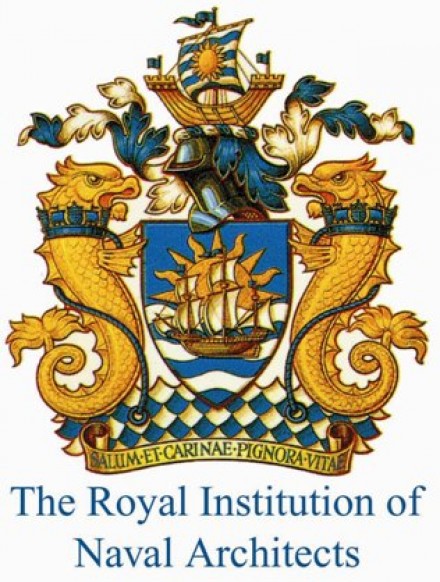Was The World’s ‘Northern-Most Island’ Erased From Charts?
by Kevin Hamilton (University of Hawaii) In 2021, an expedition off the icy northern Greenland coast spotted what appeared to be a previously uncharted island. It was small and gravelly,...




First off Trevor, for those of our readers who aren’t familiar with RINA, what is it and who does it represent?
RINA is an international professional institution, whose members are involved in the design, construction and maintenance of marine vessels and structures. Our members are representated in over 90 countries and at all levels in universities, industry and maritime organisations.
Membership in RINA provides an internationally recognised demonstration of the achievement of the highest standards of professional competence, and the commitment to maintaining those standards.
We are a member of a number of maritime organizations, where the Institution contributes its collective expertise in such areas as improving safety and the protection of the maritime environment. It has Non Governmental Organization status at the International Maritime Organisation, where it represents the views of other national maritime professional institutions. RINA is a member of the International Standards Organisation (ISO) and chairs the Confederation of European Maritime Technology Societies. It also has Agreements of Co-operation with a number of other professional institutions in the maritime community.
The maritime industry has undergone massive geographical, technical and regulatory change in recent years. How has RINA faced up to that change?
RINA’s heritage as a professional institution dates back to 1860, and since then, we’ve seen a number of significant evolutions in our industry and we’ve been able to maintain our standing and move forward through a very deliberate willingness to evolve, and to reflect the changes in the industry and the professional needs of our members.
The Institution’s mission statement – if the term would have been recognised back in 1860, was “to promote and facilitate the exchange of technical and scientific information, views and discussion”, and through this “to influence and contribute towards furthering knowledge, understanding and standards”. That remains very much the aim of the Institution today, but what has changed is both the maritime industry itself, and the amount of information available together with the means by which it may be accessed.
Could you elaborate on that a bit more? How do you facilitate this information exchange in a world where information is now so freely exchanged?
RINA provides access to up to date and independent information on technical developments in all aspects of the maritime industry though its range of international journals, conferences and training courses. In today’s world of information overload, it might be asked if that still a role for the Institution. But which of the million + answers which Google might give are accurate and credible? I believe that it is such accuracy and credibility which is the hallmark of the Institution. In seeking to encourage high professional standards by others, the Institution must also achieve them itself.
The changes to the maritime industry have been both technical and geographical, and the Institution has reflected these changes in its activities and global membership. The offshore sectors and marine renewable energy are increasingly covered more in its publications and conferences. The Institution recognised the growth of the Chinese shipbuilding by publishing its principal journal, The Naval Architect, in the Chinese language, and by organising conferences in China where it now has a Branch. More recently, it is focusing on growth regions such as Brazil. It is no coincidence, for example, that this year’s President’s Invitation Lecture, in London on November 21st, will be delivered by Eduardo Autran, Executive Manager of Supply and Logistics, Petrobras. It is also a measure of the Institution’s standing that it is able to attract leading figures in the industry to speak at such events.
Through its international membership and links with maritime organisations, the Institution is able to provide a link between universities, industry and the individual engineer. The Institution has links with over 60 universities world-wide, and believes that it has a responsibility to encourage high professional standards by those at the start of their professional careers.
The Institution both encourages and assists in the development of high standards of both professional competence and integrity by individuals involved in the design, construction and maintenance of marine vessels and structures. As chair of the Confederation of European Maritime Technology Societies, RINA has been instrumental in introducing a voluntary Code of Professional Conduct for all engineers in the maritime industry.
It recognises the role of industry in the professional development of its engineers. Its 100+ Corporate Partner members are companies or organisations which have demonstrated commitment to achieving and maintaining high professional standards in their employees and assisting them to continue their professional development. They range from small design consultancies to major Classification Societies.
What are you doing to address the changing regulatory landscape?
All in the maritime industry have seen the way safety and environmental regulations have been driving the marine sector over recent years, and the consequences that has for technology specialists, designers and ship owners alike.
The Institution commits considerable time, energy and resources to its role as a NGO at the IMO, where its contribution has been significant for a relatively small organisation, and which has been recognised by successive Secretary Generals.
Recent RINA submissions to IMO have included providing statutory advice to Marine Consultants in a review of statutory ship certificates and the procedures to be followed for the conversion of a dedicated container carrier to a general cargo ship carrying heavy cargoes. Work has also included the investigation of the arrangements of the means of access in bulk carrier double bottom and considered amendments to the current SOLAS requirements and guidance.
We also offer expert opinion on higher profile matters – the new generation of stability criteria, survivability of passenger vessels, damage stability ro-ro passenger vessels, and guidelines for stability of tankers and bulk carriers. In fact, our full participation in IMO at Committee and Sub-Committee level puts us at the heart of the discussions on the key matters affecting our sector, ranging from the development of a mandatory Polar Code, to Goal-Based Standards, the Formal Safety Assessment, the Energy Efficiency Design Index (EEDI), the Prevention of air pollution and the Reduction in Green House Gases.
And it is here that we can bring the rigour of the naval architect to proceedings. The Institution’s contribution to EEDI, for example, was intended to ensure that all future technical measures are properly evaluated before they are mandated.
RINA also needs to ensure that it provides the forum for industry to contribute to future regulations in a timely manner. For example, it is hosting the Passenger Ship Evacuation Seminar on November 30th, 2012 at its London headquarters. This will present the results of SAFEGUARD, which focused on issues associated with the evacuation of large passenger ships. SAFEGUARD has generated more comprehensive passenger evacuation data than any other single evacuation project in history.
How can you ensure the ‘RINA voice’ is heard at a time when more information sources are available than ever before?
One of RINA’s core functions is to offer a bridge between academia and industry. In the last academic year, new links were developed through our accreditation of courses at universities in India, New Zealand, Malta, Serbia, and the UK, all of which met the academic requirements of the Institution.
This is an important part of the Institution’s strategy to continue to make the right connections and bring the profession profession together using the right forums to maintain its well-being.
Extensive use is already made of the Institution’s group on the professional online network Linkedin as a technical forum. But social media has become just one more ingredient, alongside the Institution’s independent magazines, its conferences and conference proceedings and the peer-reviewed technical papers it publishes. These are available not only to RINA members but to the wider maritime community, and is one more the tangible piece of evidence that the Institution is meeting its pledge to make RINA’s collective expertise available to society in general.
As the industry has changed, we often hear complaints that the maritime sector no longer offers the career path it once did. What is your response to that?
I believe that the maritime industry can offer a rewarding career, but today it demands high standards of professional skills of its engineers, at all stages in their careers. The Institution commits considerable resources to encouraging membership and involvement in its activities by studying at college and university before joining the maritime industry. We offer free membership to many students and encourage academic excellence by a number of awards, often in association with industry. For example, this year sponsorship has been obtained for new awards at the Bangladesh University of Engineering and Technology and at the Singapore campus of Newcastle University, bringing the number of universities where awards are presented to 40.
But, beyond academia, how do you encourage those qualified in Naval Architecture to make full use of those skills as part of their working life
Access to up to date information is essential to the continuing professional development of any engineer, and RINA provides such access through its publications, conferences and local Branch meetings. As with students, it encourages excellence by a number of awards for the best papers published by the Institution on such subjects as small craft, the environment, safety, and high speed craft, many for authors under the age of 30. At the other end of the professional scale it presents such awards the David Goodrich Prize for the best paper presented at the annual Warships conference. The Institution’s most prestigious prize is the William Froude Medal, awarded from time to time to a person of any nationality who, in the opinion of the Council of the Institution, has made some conspicuous contribution to naval architecture and/or shipbuilding and whose services and personal achievements in this direction merit special consideration.
The Institution believes that the safety of both the seafarer and the maritime environment begins with good design, followed by sound construction and efficient operation. Last year it introduced The Maritime Safety Award, jointly sponsored by the Institution and Lloyd’s Register, recognising an individual, company or organisation which has made a significant technological contribution to improving maritime safety or the protection of the maritime environment. Last year, the Award went to the Engineering and Supply Department of the Royal National Lifeboat Institution for their innovative work improving the safety of its lifeboats.
But perhaps just as importantly, RINA encourages the individual member to take pride in his or her own professional achievement. The professional qualification which is implicit in achieving full membership of the Institution is recognised throughout the international maritime industry as demonstrating the achievement of the highest standards of professional competence and, just as important, of professional integrity. Why else would the Institution have an increasing number of members in over 90 countries?
What do you see for the future of the Institution?
In a nutshell, more of the same. It will continue identifying and responding to the professional needs of its member, the maritime industry and the naval architecture profession, just as it has done for over 150 years. As ships, boats and marine structures continue to evolve, so will the Institution.
Join the gCaptain Club for curated content, insider opinions, and vibrant community discussions.


Join the 105,933 members that receive our newsletter.
Have a news tip? Let us know.
Access exclusive insights, engage in vibrant discussions, and gain perspectives from our CEO.
Sign Up




Maritime and offshore news trusted by our 105,933 members delivered daily straight to your inbox.



Essential news coupled with the finest maritime content sourced from across the globe.
Sign Up